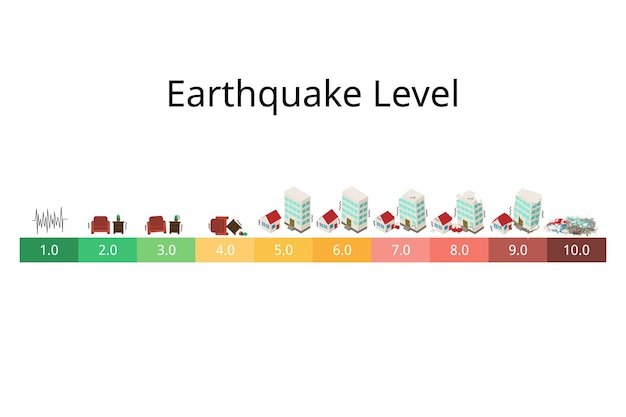Budgeting for Climate Change: Weather Expense Planning for US Residents

Budgeting for climate change involves preparing financially for weather-related expenses, which are becoming increasingly common and impactful due to changing climate patterns in the US, demanding proactive financial planning.
Climate change is no longer a distant threat; it’s impacting our wallets today. Preparing a budget for climate change means anticipating and planning for weather-related expenses, a crucial step for financial resilience.
Understanding the Financial Impact of Climate Change
Climate change is not just an environmental concern; it’s a significant financial risk for individuals and families across the United States. Extreme weather events, from hurricanes to wildfires, can lead to unexpected and often substantial expenses. Understanding the types of financial impacts that climate change can have is the first step in preparing a comprehensive budget.
Rising Insurance Costs
One of the most immediate financial impacts of climate change is the increase in insurance premiums. As weather-related disasters become more frequent and severe, insurance companies are forced to raise rates to cover potential losses. Homeowners in areas prone to flooding, wildfires, or hurricanes may see their premiums skyrocket, making it essential to shop around and compare rates regularly.
Property Damage and Repair
Extreme weather events can cause significant damage to homes and other properties. Flooding can ruin foundations and interiors, while high winds can cause roof damage and toppled trees. Wildfires can destroy homes and entire communities. Repairing or replacing damaged property can be incredibly expensive, often requiring substantial out-of-pocket expenses even with insurance coverage. Preparing for these potential costs is a crucial part of budgeting for climate change.

To better understand the financial implications, consider these points:
- Assess your risk: Identify the types of weather events most likely to affect your area.
- Review your insurance: Understand what your insurance policy covers and whether it provides adequate protection against potential damage.
- Create an emergency fund: Set aside money specifically for unexpected weather-related expenses.
In conclusion, recognizing the financial impact of climate change is essential for effective budgeting. By understanding the potential risks and taking proactive steps to prepare, individuals and families can mitigate the financial strain caused by extreme weather events. This preparation includes evaluating insurance options, assessing vulnerabilities, and establishing emergency funds.
Creating a Weather-Related Emergency Fund
A dedicated emergency fund is a cornerstone of budgeting for climate change. Setting aside money specifically for weather-related expenses can provide a financial cushion when disaster strikes. This fund can cover immediate needs like temporary housing, food, and essential supplies, as well as larger expenses such as home repairs or insurance deductibles.
How Much to Save
Determining the appropriate amount for a weather-related emergency fund depends on several factors, including your location, the types of weather events common in your area, and your insurance coverage. As a general guideline, aim to save at least 3-6 months’ worth of essential living expenses. If you live in an area prone to frequent or severe weather, consider saving even more.
Strategies for Building Your Fund
Building an emergency fund takes time and discipline. Start by setting a savings goal and creating a budget that prioritizes saving. Consider automating your savings by setting up regular transfers from your checking account to a dedicated savings account. Small, consistent contributions can add up over time.
- Set a Goal: Determine how much money you’ll need to cover potential weather-related expenses.
- Automate Savings: Schedule regular transfers to your emergency fund.
- Cut Expenses: Identify areas in your budget where you can reduce spending.
In summary, creating a weather-related emergency fund is a proactive step in budgeting for climate change. This fund provides a financial buffer to handle unexpected expenses caused by extreme weather events, ensuring greater financial security during challenging times.
Home Improvement Investments for Climate Resilience
Investing in home improvements that enhance climate resilience is another crucial aspect of budgeting for climate change. These improvements can help protect your property from damage caused by extreme weather events, reduce energy consumption, and lower long-term expenses. Consider upgrades that address common climate-related challenges in your area.
Flood-Proofing Your Home
If you live in a flood-prone area, consider flood-proofing your home. This can include installing flood barriers, elevating appliances, and sealing walls. While these improvements may require a significant upfront investment, they can prevent costly damage in the long run and reduce flood insurance premiums.
Strengthening Your Roof and Windows
High winds and severe storms can cause significant damage to roofs and windows. Consider upgrading to stronger roofing materials and impact-resistant windows. These improvements can withstand high winds and flying debris, protecting your home from damage during severe weather events. This aspect is vital for effective budgeting for climate change.

Here are some additional home improvements to consider:
- Install solar panels: Reduce your reliance on fossil fuels and lower your energy bills.
- Improve insulation: Keep your home cooler in the summer and warmer in the winter, reducing energy consumption.
- Plant drought-resistant landscaping: Reduce water consumption and create a more resilient landscape.
Investing in home improvements that enhance climate resilience is a smart long-term strategy in budgeting for climate change. These improvements not only protect your property from damage but also reduce energy consumption and lower long-term expenses, contributing to a more sustainable and financially secure future.
Evaluating Insurance Coverage and Policy Options
Having adequate insurance coverage is critical when budgeting for climate change. Reviewing your existing policies and exploring additional coverage options can help protect you from financial losses caused by extreme weather events. Understanding what your insurance covers and identifying potential gaps in coverage is essential for comprehensive financial planning.
Homeowners Insurance vs. Flood Insurance
Homeowners insurance typically covers damage caused by wind, hail, and fire, but it often excludes flood damage. If you live in a flood-prone area, you need to purchase separate flood insurance through the National Flood Insurance Program (NFIP) or a private insurer. Understanding the difference between these policies and ensuring you have adequate coverage is crucial for financial protection.
Coverage for Specific Climate Risks
Depending on your location, you may need additional coverage for specific climate risks, such as earthquake insurance in earthquake-prone areas or wildfire insurance in areas at high risk of wildfires. Review your policies to ensure they provide adequate coverage for the types of weather events most likely to affect your area.
Points to consider when evaluating your insurance coverage:
- Assess Your Risks: Understand the specific climate-related risks in your area.
- Review Policy Limits: Ensure your coverage limits are sufficient to cover potential losses.
- Compare Deductibles: Consider the impact of deductibles on your out-of-pocket expenses.
Evaluating insurance coverage and policy options is a critical step in budgeting for climate change. By understanding what your insurance covers and purchasing additional coverage as needed, you can protect yourself from significant financial losses caused by extreme weather events. This proactive approach ensures that you are adequately prepared for potential climate-related expenses.
Government Assistance and Relief Programs
When budgeting for climate change, it’s useful to be aware of potential government assistance and relief programs that can provide financial support during and after extreme weather events. These programs can help cover expenses such as temporary housing, food, and home repairs. Knowing where to find these resources can be invaluable during a crisis.
FEMA Disaster Assistance
The Federal Emergency Management Agency (FEMA) provides disaster assistance to individuals and families affected by major disasters. This assistance can include grants for temporary housing, home repairs, and other disaster-related expenses. To be eligible, you must register with FEMA and meet certain eligibility requirements.
State and Local Programs
In addition to federal assistance, many states and local governments offer their own relief programs to help residents recover from extreme weather events. These programs may provide grants, loans, or other forms of financial assistance. Check with your state and local emergency management agencies to learn about available resources.
Key steps to take when seeking government assistance:
- Register with FEMA: If you are affected by a major disaster, register with FEMA as soon as possible.
- Document Your Losses: Keep records of all damages and expenses related to the weather event.
- Explore State and Local Resources: Check with your state and local governments for additional assistance programs.
In conclusion, understanding available government assistance and relief programs is an important part of budgeting for climate change. These programs can provide crucial financial support during and after extreme weather events, helping individuals and families recover and rebuild.
Long-Term Financial Planning for Climate Uncertainty
Budgeting for climate change isn’t just about immediate expenses; it also involves long-term financial planning in the face of climate uncertainty. This includes considering how climate change may affect your investments, retirement savings, and overall financial security.
Diversifying Investments
Climate change can have a significant impact on various sectors of the economy, from agriculture to real estate. Diversifying your investment portfolio can help mitigate these risks by spreading your investments across different industries and asset classes. Consider investing in companies that are developing climate-resilient technologies or sustainable practices.
Adjusting Retirement Savings
Climate change may also affect your retirement savings. Rising sea levels, extreme weather events, and other climate-related impacts can disrupt supply chains, increase inflation, and undermine economic growth. Adjusting your retirement savings strategy to account for these potential risks can help ensure a secure financial future. Effective budgeting for climate change is vital here.
Strategies for long-term financial planning amid climate uncertainty:
- Diversify your investment portfolio: Spread your investments across different industries and asset classes.
- Consider climate-resilient investments: Invest in companies that are developing sustainable practices.
- Adjust your retirement savings strategy: Account for potential climate-related risks to your financial future.
Long-term financial planning for climate uncertainty is essential for safeguarding your financial future. By diversifying investments, adjusting retirement savings, and staying informed about climate-related financial risks, you can build a more resilient and secure financial plan.
| Key Point | Brief Description |
|---|---|
| 💰 Emergency Fund | Save 3-6 months of expenses for weather-related incidents. |
| 🏠 Home Improvements | Invest in flood-proofing, stronger roofs, and energy efficiency. |
| 🛡️ Insurance | Review coverage for floods, earthquakes, and wildfires. |
| 🌍 Investments | Diversify and consider climate-resilient options. |
FAQ: Budgeting for Climate Change
▼
Budgeting for climate change helps protect your finances from unexpected weather-related costs such as home repairs and increased insurance premiums due to extreme weather events.
▼
Start by setting a savings goal, automating regular transfers to a dedicated savings account, and cutting unnecessary expenses to allocate more funds to this crucial financial safety net.
▼
Consider flood-proofing, upgrading roofing, installing impact-resistant windows, and improving insulation. These can safeguard your property and reduce energy bills amid climate change.
▼
Review homeowners insurance and obtain flood, earthquake, or wildfire insurance based on your location’s high-risk weather, ensuring adequate coverage against potential losses.
▼
Register with FEMA for federal disaster assistance, and explore local and state programs offering grants or loans after extreme weather events impact your area.
Conclusion
Preparing a budget for climate change is critical for securing your financial future in an era of increasing climate variability. By creating an emergency fund, investing in home resilience, staying informed about insurance, and planning long-term, you can weather the financial storms ahead.





